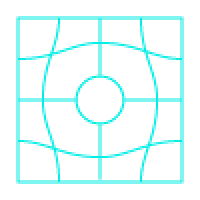Our Research

Nanomaterials
Our research efforts in nanomaterials include applications in different types of sensors (sensing materials) offering significant benefits to the homeland security sector among others.
Research domains include:
- Graphene composites for sensing applications
- Graphene for water treatment
- Nanocomposites for coatings
- Nanomaterials to enhance the mechanical performance of different materials

Self-healing materials
Our research into self-healing materials is devoted to develop ability of automatically repair damage without external diagnosis or human intervention.
Research domains include:
- Self-healing bulk polymers
- Self-healing coatings and paints
- Self-healing composites
For anti-corrosion and anti-fouling surfaces, healthcare and electronic devices, and construction and structures applications.

Smart materials and structures
At AMRC, our work in the field of both engineered and naturally occurring multifunctional materials seeks to expand the universe of such materials and broaden their use cases.
Research domains include:
- Sensing, actuation, and energy transduction
- Morphing structures
- Controllable and monitorable energy, shock and vibration absorbers
- Prognostic live monitoring and reporting system of structural health
- Applying machine learning techniques for health monitoring

Metamaterials
We are researching a new generation of artificial metamaterials with properties that extend beyond those of materials found in nature.
Research domains include:
- Cloaking materials and stealth
- Elastic metamaterials that exhibit unusual vibrational and acoustic properties
- Metalenses and electromagnetic metamaterials

Energy-absorbing materials applications
The broad array of uses for energy-absorbing materials makes this a priority research area for AMRC. These lightweight materials and structures are capable of absorbing extreme levels of energy, whether from a localized blast, impact loading or some other force.
Research domains include:
- Hybrid materials based on combinations of dissimilar impact resistance
- Multifunctional materials and structures to absorb impact energy
- Advanced materials characterization for impact purposes
- Computational numerical simulations to predict material on impact loading

Additive manufacturing
Additive manufacturing makes it possible to produce intrinsically complex structures with enhanced properties, many of which were previously impossible to manufacture using traditional manufacturing processes. New opportunities in the field are continually being identified in aviation, healthcare, power, manufacturing, and beyond.
Research domains include:
- 3D printing of high-performance metals
- Next Generation Materials for Metal Additive Manufacturing
- Design for Additive Manufacturing
- Multi-material functional additive manufacturing
- Process in-situ monitoring
- Topology optimisation for enhanced performance and light-weighting

Energy Storage Materials
Set to contribute for nullifying the CO2 emission by 2050, our research efforts mainly focus on the development of eco-sustainable energy devices. Our technology, which stems from in-the-house lightweight and flexible freestanding films, can be designed to fit specific case applications. These latter ones including, but not limiting to small electronics, wearables, and health implants.
Research domains include:
- Buckypaper design and customization for customized applications
- Supercapacitors and batteries, exploiting local resources and non-toxic solution for small electronics
- Solid-state Batteries (SSBs), targeting safer, longer-lasting chemistries to ensure competitive products

Thermoplastic Materials
Our diverse research efforts in composites and Thermoplastics provide product solutions for a variety of different applications in the fiber-reinforced composites market. These applications include, but not limited to the automotive, aerospace, maritime, construction and last but not least, oil and gas markets. This supports the strategic vision of TII in positioning the UAE as one of the technology leaders in composites automation and lightweight materials’ manufacturing both worldwide and regionally.
Research domains include:
- Through-thickness reinforcement of composite materials
- High-performance Thermoplastics composites
- Multifunctional composites and textiles
- Composite manufacturing automation
- Bio-based and sustainable composites